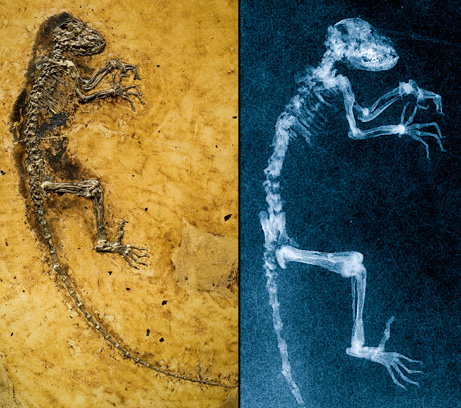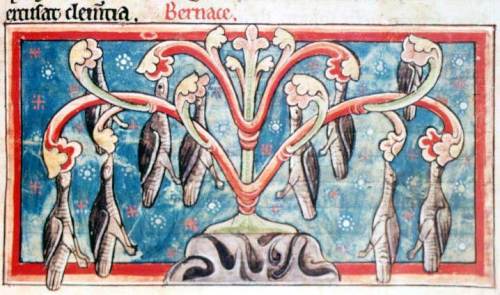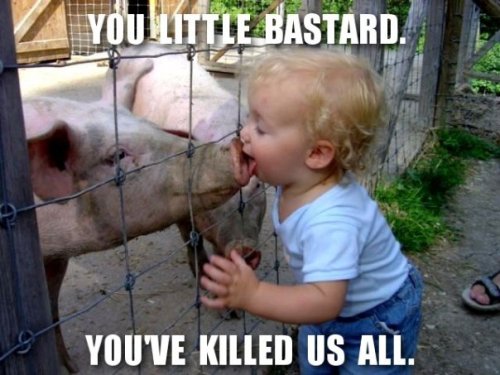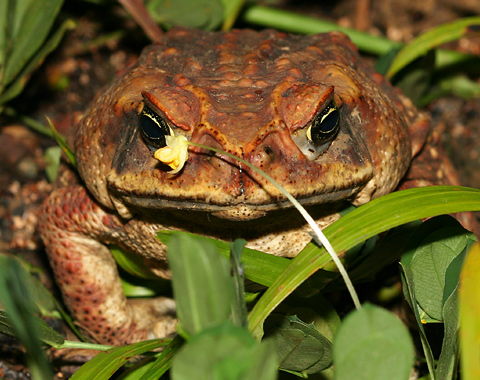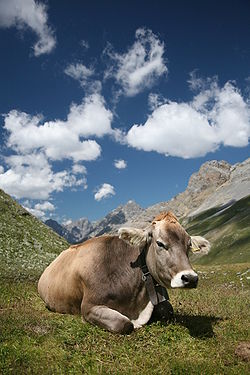
In 2002, a series of bizzare bovine incidents in the Norweigian countryside alarmed residents, and alerted us to the possibility that cows are beginning to strain at the agricultural tether.
The first victim, 23-year old Stian Skoglund, was “bashed and trampled by a furious cud-chewer” according to one publication.
The incident occurred when Skoglond noticed that one of the cows he was attempting to gather for milking appeared “uneasy.” Apparently under the delusion that he had psychic animal powers, Skoglond “made eye contact with the animal” and “tried to calm it.” Unsurprisingly, the cow “became provoked:”
“The cow butted me and I fell,” Skoglund reported. Frightened, our failed animal mesmerist scrambled to his feet and tried to make a dash for it, but the cow, undettered, knocked him to the ground. Pleased with her work, she then began—according to the same Norwegian English- language publication—to “hop and trample him,” ceasing only when her victim gave up the fight and played dead.
Skoglund suffered a shattered leg, several broken ribs, numerous lacerations, and multiple contusions. He later wondered whether the attack was done in retaliation for his part in hauling away the body of a calf that had died days earlier.
“Maybe,” quoth our budding animal psychologist, “it was her motherly instincts being aroused. I’ve also heard that I shouldn’t have made eye contact with her, that only provokes them.”
No shit, Stian.
Other incidents include a 45-year-old farmer who was hospitalized after a cow charged his wife (The farmer found himself in this unfortunate position after he attempted to wave his arms and distract the cow from its attack on his wife), and a nearby farmer who was trampled to death by rampaging bulls.
But by far the most shocking occurrence, dear readers, was the incident of the cow who fell from the sky and died, nearly taking a car full of Norwegian travellers with her.
The story begins like a joke, with four men traveling in a car and debating the source of “a large shadow in the sky.” Was it a bird? No. a plane? No. nor was it a caped adventurer. It fell to earth with a mighty thump, mere feet in front of the moving vehicle.
Driver Olav Kjeldstad reported that, having barely managed to avoid hitting the mysterious object, he stopped the car and he and his three passengers looked behind them to where a cow lay in the road; according to one passenger, the fallen bovidae bovinae “only managed a few moos before dying.”
Kjelstad admitted that he “was pretty shaken afterwards” but also admitted– with typical Norse pragmatism and an inborn appreciation for dramatic subgenre– that “we had a laugh as well;” the entire situation, he said, “was tragicomic.”
Perhaps Kjelstad should have loaned his well-thumbed Companion to Norse Drama to poor Stian Skoglund, upon whom the subtleties of tragicomedy were clearly lost.





